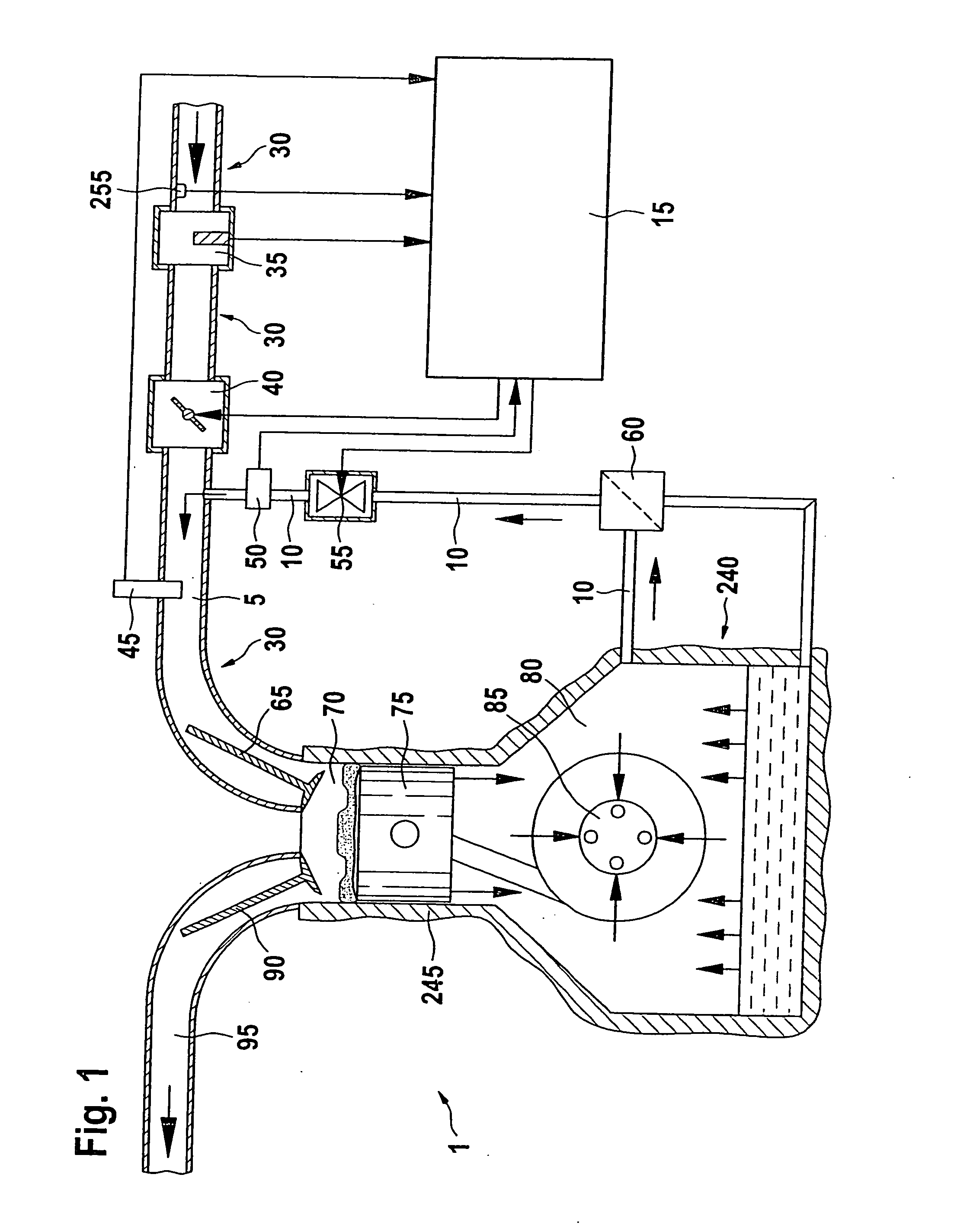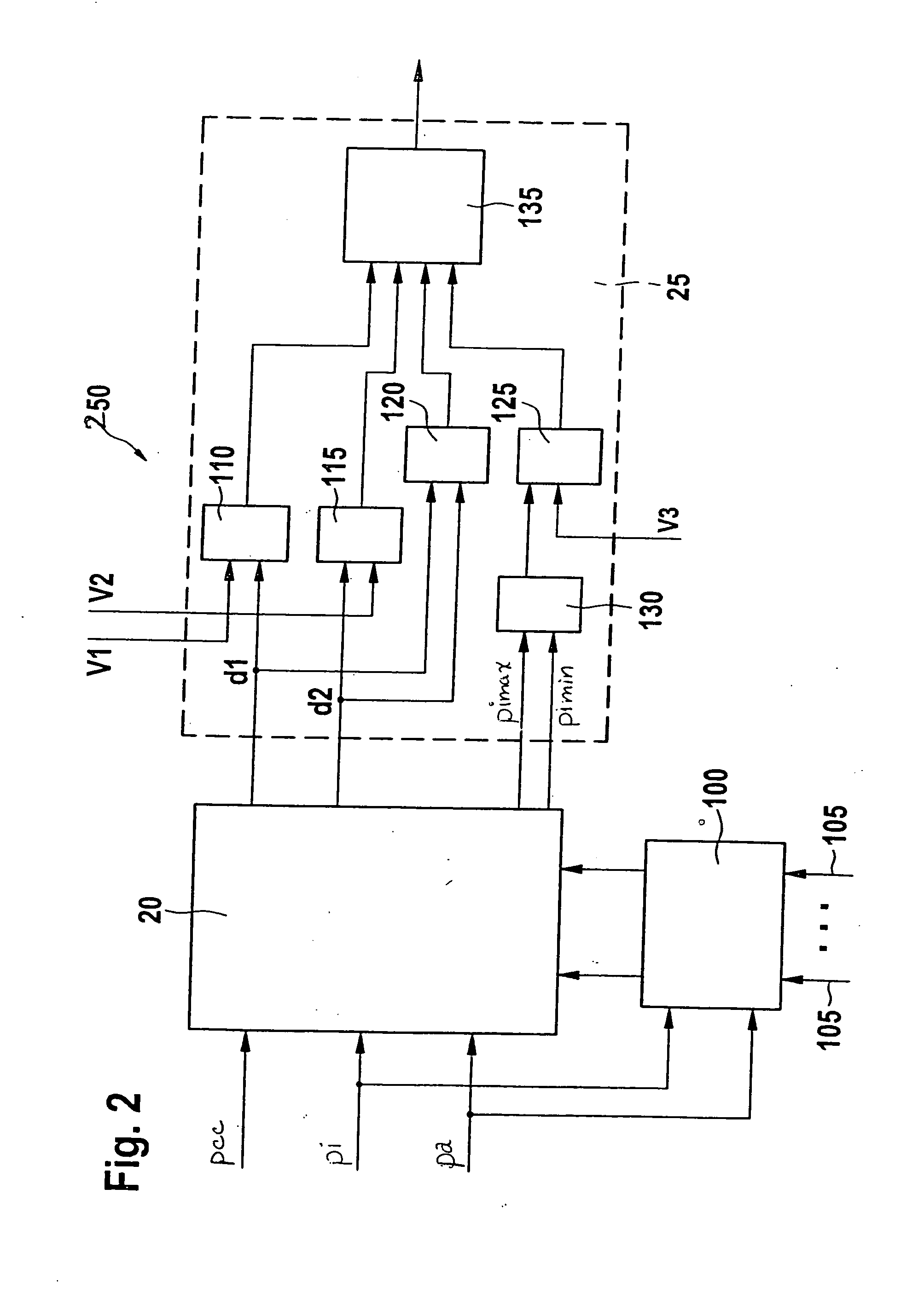Method and device for operating an internal combustion engine
a technology of internal combustion engine and operating point, which is applied in the direction of machines/engines, electric control, instruments, etc., can solve the problems of escaping harmful hc emissions into the environment, changing the operating point of the engine, and affecting the operation of the engin
- Summary
- Abstract
- Description
- Claims
- Application Information
AI Technical Summary
Benefits of technology
Problems solved by technology
Method used
Image
Examples
Embodiment Construction
[0029] In FIG. 1, reference numeral 1 designates an internal combustion engine as a whole, the combustion engine belonging to a motor vehicle, for example. Internal combustion engine 1 includes a combustion engine 240, which may be embodied as a spark-ignition engine or as a diesel engine, for instance. In the following, for example, internal combustion engine 240 may be a spark-ignition engine. FIG. 1 shows one of possibly several cylinders of spark-ignition engine 240. The cylinder is indicated by reference numeral 245 in FIG. 1. Via an intake valve 65, an intake manifold 5 conducts air to a combustion chamber 70 of cylinder 245. Intake manifold 5 is part of an air supply 30 and represents the part of air supply 30 between a throttle valve 40 and an intake valve 65. Arranged in intake manifold 5 is an intake-manifold pressure sensor 45. Intake-manifold pressure sensor 45 measures the intake-manifold pressure pi in intake manifold 5 and conveys the measuring result to an engine con...
PUM
 Login to View More
Login to View More Abstract
Description
Claims
Application Information
 Login to View More
Login to View More - R&D
- Intellectual Property
- Life Sciences
- Materials
- Tech Scout
- Unparalleled Data Quality
- Higher Quality Content
- 60% Fewer Hallucinations
Browse by: Latest US Patents, China's latest patents, Technical Efficacy Thesaurus, Application Domain, Technology Topic, Popular Technical Reports.
© 2025 PatSnap. All rights reserved.Legal|Privacy policy|Modern Slavery Act Transparency Statement|Sitemap|About US| Contact US: help@patsnap.com



